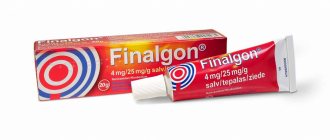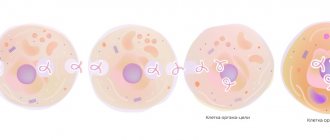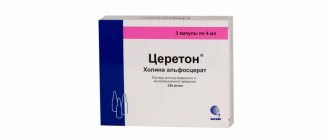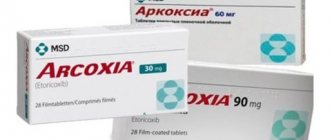Paracetamol is a non-steroidal anti-inflammatory drug that is often used to reduce temperature and eliminate high fever in infectious diseases. Prevalence of use Paracetamol tablets associated with the availability of the drug - it is inexpensive, you can find the drug in any pharmacy. Paracetamol for head patients often use it because in addition to the antipyretic effect, the drug also has an analgesic effect.
Compound
Paracetamol is a white tablet, sometimes with a creamy tint. In addition, there is also syrup, which is often prescribed to small children.
One tablet of the drug contains either 200 or 500 mg of paracetamol as a chemical substance (depending on the dosage). The drug also contains auxiliary compounds, for example, potato starch, povidone, stearic acid, and croscarmellose sodium.
Pharmacodynamics
The drug belongs to the group of non-narcotic analgesics - the drug has an analgesic effect. Paracetamol has a pronounced antipyretic and analgesic effect. The biochemical basis of these reactions is inhibition of cyclooxygenase (one of the leading enzymes responsible for the synthesis of prostaglandins - mediators of inflammation).
Thus, the synthesis of prostaglandins is inhibited in the nervous system, which, moreover, have a pyrogenic effect (leading to an increase in temperature) on the hypothalamus, where the thermoregulation center is located. The hypothalamus is a brain structure responsible for both maintaining the required body temperature and producing certain hormonal factors. Inhibition of prostaglandin synthesis leads to a decrease in their pyrogenic effect on the hypothalamus, heat transfer from the body increases, and temperature decreases.
In parallel, Paracetamol affects the conduction of pain sensitivity impulses along afferent nerve fibers. This mechanism of action provides an analgesic effect.
Research is being conducted on the effect of Paracetamol on the serotonin system, as well as cannabinoid transmission in the brain.
Indications and contraindications for use
Systemic use of Paracetamol by a patient is possible only with a prescription from the attending physician. Self-medication is strictly prohibited, because the drug has both strict indications for use and a number of contraindications.
Paracetamol is a symptomatic remedy. The drug reduces the severity of some symptoms without affecting the actual cause of their occurrence.
Indications for use
| Indications for use | Decoding |
| Different types of pain | Paracetamol is effective for eliminating headaches, dental pain, muscle pain, and discomfort during the menstrual cycle. In addition, the drug is prescribed for the initial stages of arthritis in patients to relieve joint pain. Paracetamol has a moderate analgesic effect, which explains its use in the presence of mild pain. |
| Feverish conditions | Provides relief of fever as a symptom of acute respiratory viral infections, influenza, and other infectious diseases accompanied by an increase in body temperature. The drug is able to effectively reduce body temperature and alleviate the patient's condition. |
Contraindications for use
| Contraindication for use | Decoding |
| Presence of hypersensitivity to one or more components of the drug | The use of Paracetamol is prohibited in patients with episodes of allergic reactions after taking the drug. With repeated use, severe hypersensitivity reactions may develop, including the development of anaphylactic shock. |
| Children under 6 years old | The age-related contraindication to Paracetamol therapy also cannot be ignored: taking the drug in childhood is not allowed. |
| Combinations with other medicinal compounds containing paracetamol | It is prohibited to take Paracetamol while using certain other medications that contain the chemical compound “paracetamol” as an active ingredient. Often, medications to eliminate some symptoms of infectious diseases contain paracetamol. When taking Paracetamol tablets and other substances containing paracetamol, the side effects of the drugs may increase. |
| Liver diseases | The drug should be used with caution in patients with liver diseases, for example: benign hyperbilirubinemia, viral hepatitis, alcoholic liver damage. This is due to impaired liver detoxification function. |
| Pregnancy and lactation period | The drug should be used as carefully as possible during pregnancy and breastfeeding. The dosage should be selected individually with your doctor. |
| Elderly age | Warning when using Paracetamol in old age is associated with physiological changes in metabolism in the body of an elderly person, which also requires careful adjustment of the dosage of the drug. |
Effect of the drug
Paracetamol has been considered a popular and sought after pain reliever and antipyretic for half a century. Efficiency is associated with uniform distribution across tissues.
The active ingredients block the action of prostaglandins, which are sources of pain. This eliminates moderate pain. The drug also copes well with fever. This serious symptom can indicate a variety of infectious and inflammatory diseases.
Before taking it, you should consult your doctor and read the instructions to prevent side effects. You should strictly follow the dosage, otherwise complications related to the functioning of the heart and kidneys may occur. The risk increases when taken concomitantly with alcoholic beverages.
Signs of poisoning do not appear immediately. Initially, your general well-being may only slightly deteriorate.
Instructions for use: methods, dosage
The instructions indicate that the medicine must be taken orally (by mouth), in the case of tablets, washed down with one glass of water. The instructions for use of Paracetamol also note that the dosage and frequency of taking the drug varies depending on the age of the patient.
Adult patients and children over the age of 12 years are recommended to take 2 tablets with a dosage of 200 mg or one tablet with a dosage of 500 mg (from 400 to 500 mg) every 4-6 hours when the temperature rises or pain increases. It is important to remember that the maximum dose of Paracetamol that can be consumed per day is 4 g. That is, if the patient takes 500 mg tablets, then no more than 8 tablets are allowed to be taken in 24 hours. Accordingly, if a person takes tablets with a dosage of 200 mg, you can drink no more than 20 tablets per day.
If Paracetamol tablets are prescribed to a child aged 6 to 12 years, the dosage changes significantly, the calculation is made individually. How much Paracetamol should children take? If in the instructions for adults the height and weight of the patient do not matter, then in the case of a child these are the key parameters. Paracetamol for fever or as a pain reliever should be used, observing the following rules:
- dose per dose (single dose) is 10-15 mg per 1 kilogram of the child’s body weight. So, per day the maximum dose is 60 mg per 1 kilogram of body weight;
- Often in children, Paracetamol is used in a dosage of 250 mg or 500 mg (respectively, half a tablet or one tablet with a dosage of 500 mg) 3-4 times a day when the temperature rises or pain increases;
- the child should not be given the medicine more often than once every 4 hours, or more than 4 times a day;
- It is prohibited to use Paracetamol tablets for more than 3 days without consulting the child’s attending physician.
For children under 6 years of age there is Paracetamol syrup. The fact is that up to 6 years of age, a child may have difficulty swallowing hard tablets, so the syrup will relieve the child’s psychological and physical discomfort when using the medicine. The use of syrup should be discussed with the child’s attending physician: he will explain the frequency of use of the drug and calculate the volume of syrup per use.
Instructions for use
Paracetamol is prescribed in the following cases:
- As an antipyretic for infectious and inflammatory diseases that are accompanied by an increase in temperature. In this case, the drug affects the thermoregulation center in the cerebral cortex, resulting in a decrease in body temperature.
- As an analgesic for various types of pain of mild and moderate severity: headaches, non-inflammatory toothaches, colds, early stages of migraines, acute respiratory infections, muscle pain.
- Painful menstruation in women (algomenorrhea).
- Pain from burns and injuries.
How to take Paracetamol?
The dosage of the drug and the course of treatment are determined by the doctor. It all depends on the individual characteristics of the patient, the presence of chronic diseases, the intensity of the pain syndrome, and contraindications. The drug is prescribed orally with a small amount of water, 1 tablet. 2 times a day. To reduce the temperature, it can be used for no more than 3 days. For pain relief, the drug is used for no more than 5 days.
Side effects
The instructions indicate that some adverse reactions may occur in response to taking the drug.
On the part of the immune system, a person may notice hypersensitivity skin reactions. Local inflammation, redness, and rash may occur after taking the drug. In more severe situations, an anaphylactic reaction occurs, accompanied by Quincke's edema and Stevens-Johnson syndrome. In this case, toxic epidermal necrolysis may occur as a skin manifestation. A pronounced reaction of the immune system, in particular the occurrence of anaphylactic shock, is often associated with a person’s allergy to the drug. Therefore, it is very important to find out in time whether there is a history of allergic reactions in order to promptly prevent the development of anaphylaxis.
On the part of the hematopoietic organs, anemia may develop as a side reaction. Anemic syndrome is a condition based on a decrease in the number of red blood cells and/or hemoglobin in the patient’s blood. Sometimes thrombocytopenia occurs (a decrease in the number of platelets - the cells responsible for the formation of blood clots). In this case, the patient may notice frequent and intense bleeding (for example, nosebleeds) that do not stop for a long time. This is due to a decrease in platelet count: it takes longer for a blood clot to form. Methemoglobinemia and agranulocytosis are likely to occur, which are quite specific side effects and require immediate discontinuation of the drug. Changes in the circulatory system can be noticed both by clinical signs (for example, with anemia, the patient experiences pallor, drowsiness, lethargy, hemorrhagic manifestations are possible) and by laboratory data. The determining factor here is a general and biochemical analysis of the patient’s blood, where a complete picture of the state of various human blood cells will be visible.
On the part of the respiratory system, the occurrence of bronchospasm was observed in those patients who had already noted increased sensitivity to other non-steroidal anti-inflammatory drugs (for example, aspirin). Bronchospasm is associated with a hypersensitivity reaction of the body, and if, after taking Paracetamol tablets, the patient complains of difficulty breathing or shortness of breath, the drug should be immediately noted and the hypersensitivity phenomenon should be stopped.
On the part of the liver, in some rare cases, the development of acute liver failure has been observed. Due to the metabolism of the drug in the liver, as well as the detoxification function of the liver, you should be careful about the state of the hepatobiliary system during Paracetamol therapy. There have been isolated cases that required liver transplantation after active and long-term use of Paracetamol: probably, patients took this non-steroidal anti-inflammatory drug for a long time, which led to the formation of drug-induced hepatitis, or even cirrhosis of the liver.
All patients taking Paracetamol tablets or Paracetamol syrup should remember: the occurrence of any adverse reactions listed in this section or other nonspecific manifestations while taking the drug must be reported to your doctor! The doctor will adjust the dose of Paracetamol or select another drug on an individual basis.
Pregnancy and lactation
The use of Paracetamol during pregnancy is justified if the potential benefit to the mother outweighs the risk to the health of the fetus. During the period of active breastfeeding, the mother is not prohibited from taking Paracetamol. It has been proven that the medicinal compound passes into breast milk in very small quantities, which does not affect the baby’s health. In addition, published data regarding the use of Paracetamol during lactation indicate that breastfeeding is not a contraindication for taking the drug.
Interaction with other drugs
The instructions for use of Paracetamol indicate that using the drug together with other non-steroidal anti-inflammatory drugs or painkillers can lead to toxic damage to the kidneys. Moreover, the combined use of different NSAIDs threatens the occurrence of acute renal failure - an emergency condition that requires prompt relief.
Care should be taken when prescribing Paracetamol in high doses and salicylates. There is a possibility of oncological neoplasms of the urinary system, for example, the kidney or bladder.
If a patient, for certain indications, takes drugs that inhibit the process of hematopoiesis, then the attending physician should be aware of the increased toxicity of the drug in this case. It is necessary to think about prescribing another drug or adjusting the dosage.
When a person takes anticoagulant therapy for direct indications, especially indirect anticoagulants (warfarin and other coumarin drugs), the risk of bleeding increases. At the same time, single doses of Paracetamol do not lead to bleeding; such a possibility exists only with systemic administration of the drug.
If a person is prescribed liver enzyme activators (for example, barbiturates, tricyclic antidepressants, rifampicin and other drugs), the risk of liver toxicity increases significantly, especially in overdoses.
Antiemetic drugs - metoclopramide, domperidone significantly increase the rate of absorption of Paracetamol. At the same time, cholestyramine reduces the intensity of absorption of the drug. It should be remembered that ethyl alcohol in combination with Paracetamol becomes a serious risk factor for the development of pancreatitis.
It is noted that Paracetamol can reduce the degree of activity of uricosuric drugs.
Paracetamol tablets 500 mg No. 10
Name
Paracetamol.
Release forms
Pills.
INN
Paracetamol.
FTG
Analgesic non-narcotic drug.
Description
Tablets are white or white with a creamy tint, flat-cylindrical, scored and chamfered.
Compound
1 tablet contains: active ingredient – paracetamol – 200 mg or 500 mg; excipients: povidone, croscarmellose sodium, stearic acid, potato starch.
Pharmacotherapeutic group
Other analgesics and antipyretics. Anilides. ATX code N02BE01.
Pharmacological properties
Pharmacokinetics: Rapidly and almost completely absorbed from the gastrointestinal tract, TCmax is achieved after 0.5-1 hour; Cmax – 5-20 µg/ml. Bonding with plasma proteins is 20-30%. Penetrates through the BBB. Less than 1% of the dose of paracetamol taken by a nursing mother passes into breast milk. The therapeutically effective concentration of paracetamol in plasma is achieved when administered at a dose of 10–15 mg/kg. Metabolized in the liver (90-95%): 80% enters into conjugation reactions with glucuronic acid and sulfates to form inactive metabolites; 17% undergoes hydroxylation to form 8 active metabolites, which conjugate with glutathione to form inactive metabolites. With a lack of glutathione, these metabolites can block the enzyme systems of hepatocytes and cause their necrosis. The CYP2E1 isoenzyme is also involved in the metabolism of the drug. The half-life (T½) is 1-4 hours. It is excreted by the kidneys (90-100% of the taken therapeutic dose on the first day) in the form of metabolites, mainly conjugates, only 3% unchanged. In elderly patients, the clearance of the drug decreases and the half-life increases. Pharmacodynamics Paracetamol is an analgesic and antipyretic (pain reliever and antipyretic). Blocks cyclooxygenase in the central nervous system, affecting the centers of pain and thermoregulation. The anti-inflammatory effect is practically absent.
Indications
Symptomatic therapy as a moderate analgesic and antipyretic for most pain syndromes and febrile conditions: - headache (including migraine and tension headaches), toothache, sore throat, lower back pain, muscle pain, rheumatic pain (mild arthritis ), painful menstruation; - with elevated body temperature against the background of colds and flu.
Directions for use and doses
The drug is intended for oral administration. Adults and adolescents over 12 years of age: 400-500 mg (2 tablets of 200 mg or 1 tablet of 500 mg) every 4-6 hours as needed. The interval between doses is at least 4 hours. The maximum daily dose of paracetamol should not exceed 4 g. For children aged 6–12 years, the dose of paracetamol is calculated depending on age and body weight. A single dose is 10-15 mg/kg body weight, the maximum daily dose is 60 mg/kg body weight. As a rule, it is used in a dose of 250-500 mg (½-1 tablet of 500 mg) 3-4 times a day as needed. You should not take the drug more often than every 4 hours or more than 4 times a day. You should not continue taking it for more than 3 days without consulting a doctor. Paracetamol in tablet form is not recommended for use in children under 6 years of age due to difficulties in swallowing solid dosage forms.
Side effects
Immune system disorders: anaphylaxis, skin hypersensitivity reactions including skin rash, angioedema, Stevens-Johnson syndrome/toxic epidermal necrolysis. Disorders of the hematopoietic organs: anemia, methemoglobinemia, thrombocytopenia, agranulocytosis. Respiratory system disorders: bronchospasm in patients sensitive to aspirin and other NSAIDs. Liver disorders: Impaired liver function, including cases of acute liver failure that required liver transplantation or resulted in death. If adverse reactions occur, including those not listed in this instruction, you should stop taking the drug.
Contraindications
- hypersensitivity to paracetamol; - age up to 6 years. Do not take simultaneously with other paracetamol-containing medications or combination medications for the treatment of symptoms of colds and flu. With caution Use with caution in cases of benign hyperbilirubinemia (including Gilbert's syndrome), viral hepatitis, alcoholic liver damage, in old age, during pregnancy and lactation.
Interaction with other drugs
Long-term combined use of paracetamol and other NSAIDs increases the risk of developing “analgesic” nephropathy and renal papillary necrosis, the onset of end-stage renal failure. Simultaneous long-term administration of paracetamol in high doses and salicylates increases the risk of developing kidney or bladder cancer. Myelotoxic drugs increase the manifestations of hematotoxicity of the drug. The drug, when taken for a long time, enhances the effect of indirect anticoagulants (warfarin and other coumarins), which increases the risk of bleeding; single doses do not have a significant effect. Inducers of microsomal oxidation enzymes in the liver (barbiturates, phenytoin, carbamazepine, rifampicin, zidovudine, diphenin, phenytoin, ethanol, flumecinol, phenylbutazone and tricyclic antidepressants) increase the risk of hepatotoxicity in overdoses. Metoclopramide and domperidone increase, and cholestyramine reduces the rate of absorption of paracetamol. Ethanol contributes to the development of acute pancreatitis. The drug may reduce the activity of uricosuric drugs.
Precautionary measures
If the patient suffers from more than moderate arthritis or requires regular use of painkillers, paracetamol should be prescribed only after consultation with a doctor. The drug is not recommended for use for more than 3 days without a doctor's prescription. Do not exceed the recommended dose. If pain or fever persists for more than 3 days, you should stop treatment and consult your doctor. To avoid toxic liver damage, it is necessary to warn patients not to drink alcohol during treatment. Do not take simultaneously with other paracetamol-containing drugs. The patient should be warned to consult a doctor if recommended doses are exceeded, even if the patient feels well, as there is a risk of delayed serious liver damage, as well as in cases of signs of an allergic reaction (swelling of the face, mouth, throat, difficulty breathing, itching or rash). There have been reports of cases of serious liver dysfunction after taking paracetamol, including cases of acute liver failure that required liver transplantation or resulted in death. It should be used with caution in persons with glucose-6-phosphate dehydrogenase deficiency, renal and liver failure. The risk of paracetamol overdose is higher in patients with non-cirrhotic alcoholic liver disease. Rare cases of anaphylaxis and other hypersensitivity reactions have been reported after taking paracetamol. Use in children. The tablets are not intended for use in children under 6 years of age. Use in persons with impaired liver and kidney function. No special adjustment of the dose and frequency of administration is required in this group of people; however, due to the high likelihood of overdose in this group of people, it is not recommended to exceed the maximum dose of paracetamol of 2.5 g per day (5 tablets of 500 mg or 12 tablets of 200 mg). mg). Use in the elderly. No special adjustment of the dose and frequency of administration is required in this group of people; however, due to the high likelihood of overdose in this group of people, it is not recommended to exceed the maximum dose of paracetamol of 2.5 g per day (5 tablets of 500 mg or 12 tablets of 200 mg). mg). Effect on laboratory parameters. During treatment with paracetamol, it is possible to increase the level of glucose in the blood plasma and distort the results of determining the glycemic profile. It is necessary to instruct the patient to inform the doctor about taking paracetamol when performing tests to determine uric acid and blood sugar levels. Glutathione deficiency due to eating disorders, cystic fibrosis, HIV infection, fasting, exhaustion causes the possibility of severe liver damage with small overdoses of paracetamol (5 g or more).
Use during pregnancy or breastfeeding
Pregnancy. Prescribing the drug is possible only if the expected benefit to the mother outweighs the potential risk to the fetus. Breastfeeding period. Paracetamol passes into breast milk, but in clinically insignificant quantities. Available published data do not contain any contraindications for breastfeeding.
Impact on the ability to drive vehicles and operate machinery
Taking paracetamol does not affect the ability to drive vehicles or use other machinery.
Overdose
The patient should be warned to consult a doctor if recommended doses are exceeded, even if the patient feels well, as there is a risk of delayed serious liver damage. An overdose of paracetamol is especially dangerous in elderly patients and young children. Overdose as a result of incorrect dosing or accidental poisoning can be fatal. Liver damage in adults is possible when taking 10 grams or more of paracetamol. Taking 5 or more grams of paracetamol can lead to liver damage in patients with the following risk factors: - long-term treatment with carbamazepine, phenobarbital, phenytoin, primidone, rifampicin, St. John's wort or other drugs that stimulate liver enzymes; - regular consumption of alcohol in excess quantities; - possibly existing glutathione deficiency (eating disorders, cystic fibrosis, HIV infection, starvation, exhaustion). Signs of acute paracetamol poisoning in the first 24 hours are nausea, vomiting, stomach pain, sweating, and pale skin. Liver damage may become apparent 12-48 hours after overdose. Impaired glucose metabolism and metabolic acidosis may occur. In severe poisoning, liver failure may progress to encephalopathy, bleeding, hypoglycemia, cerebral edema and death. Acute renal failure with acute tubular necrosis can manifest as severe lumbar pain, hematuria, proteinuria and develop even in the absence of severe liver damage. Cardiac arrhythmia and pancreatitis were also noted. Treatment: In case of overdose, immediate medical attention is required. The patient should be taken to hospital immediately, even if there are no early symptoms of overdose. Symptoms may be limited to nausea and vomiting or may not reflect the severity of overdose or the risk of organ damage. Treatment with activated charcoal should be considered if an excessive dose of paracetamol has been taken within 1 hour. Plasma concentrations of paracetamol should be assessed 4 hours or later after dosing (early determination of concentration is unreliable). Treatment with N-acetylcysteine can be carried out within approximately 24 hours after taking paracetamol, but the maximum protective effect is obtained when used within 8 hours after administration. The effectiveness of the antidote decreases sharply after this time. If necessary, the patient is administered N-acetylcysteine intravenously according to the established list of doses. In the absence of vomiting, oral methionine can be used as an appropriate alternative in remote areas outside the hospital.
Package
10 tablets (for tablets with a dosage of 200 mg or 500 mg) in a contour-free packaging made of a combined material on paper and cardboard. 1 contour cell-free package together with an insert leaflet is placed in a cardboard pack. 10 tablets (for tablets with a dosage of 200 mg or 500 mg) in a blister pack made of PVC film and aluminum foil. 2 or 5 blister packs together with an insert sheet are placed in a cardboard pack. 10 tablets with a dosage of 200 mg in contour-free packaging made of a combined material on paper and cardboard. 800 contour cellless packaging along with 10 instructions for use are placed in a cardboard box. 10 tablets with a dosage of 200 mg in a blister pack made of PVC film and aluminum foil. 500 contour strip packs along with 10 instructions for use are placed in a cardboard box. 10 tablets with a dosage of 500 mg in contour-free packaging made of a combined material on paper and cardboard. 390 contour cellless packaging along with 10 instructions for use are placed in a cardboard box. 10 tablets with a dosage of 500 mg in a blister pack made of PVC film and aluminum foil. 300 contour strip packs along with 10 instructions for use are placed in a cardboard box.
Storage conditions
In a place protected from light and moisture, at a temperature not exceeding 25 ºС. Keep out of the reach of children.
Best before date
3 years. Do not use after expiration date.
Conditions for dispensing from pharmacies
Over the counter.
Buy Paracetamol tablets 500 mg No. 10 in the pharmacy
Price for Paracetamol tablets 500 mg No. 10
Instructions for use for Paracetamol tablets 500 mg No. 10
Precautionary measures
Paracetamol tablets with particular caution to patients suffering from arthritis. It is strictly not recommended to take Paracetamol for more than 3 days in a row without a doctor’s prescription. If pain syndrome, as well as high temperature, persists for 3 days of taking Paracetamol, you should definitely consult a doctor for advice!
It is strictly prohibited to exceed the maximum daily dose of the drug: there are situations where a patient has developed acute liver failure with the need for an organ transplant or even death. Drinking alcohol during Paracetamol therapy is prohibited.
Paracetamol is allowed to be taken with great caution in patients with insufficiency of liver and kidney function. If a patient has a non-cirrhotic form of liver damage due to alcohol abuse, there is an increased risk of drug overdose.
If an allergic reaction occurs, you should seek qualified medical help.
Contraindications
Like any medicine, paracetamol has some contraindications.
Paracetamol Extratab
It is not recommended to use Paracetamol in the following cases:
- if you are hypersensitive to paracetamol,
- elderly people over 65 years old,
- children under two years old,
- if a person has liver and kidney diseases,
- for blood diseases (for example, hemophilia).
Use with caution
- jaundice (Gilbert's syndrome),
- congenital increase in blood bilirubin.
Before taking the drug, you should definitely consult your doctor if:
- if you have severe liver or kidney disease,
- you are taking drugs against nausea and vomiting (metoclopramide, domperidone), as well as drugs that lower blood cholesterol (atorvastatin),
- you are taking anticoagulants and need painkillers every day for a long time. In this case, paracetamol can be taken occasionally.
Reviews
As soon as the temperature starts to rise, I take Paracetamol, and its rise immediately slows down. An effective and inexpensive product!
I always use Paracetamol if I feel like I'm starting to get sick. It reduces the temperature perfectly, and if you need to reduce it again, the drug can be taken every 4 hours.
I like the price of Paracetamol. The drug is absolutely accessible to all people due to its low price.
Question answer
- How to take Paracetamol for children?
The instructions for the drug indicate the dosage regimen for children. It is important for parents to remember that up to 6 years of age, a child can only take Paracetamol syrup, and at the age of 6 to 12 years, the dosage of the drug is calculated individually.
- How often can I take the drug?
When the temperature rises, the drug is allowed to be taken every 4 hours (2 tablets at a dose of 200 mg, one tablet - 500 mg). The maximum daily dose should not exceed 4 g.
- How many days can you take Paracetamol?
You are allowed to take the drug for no more than 3 days in a row. If fever or pain does not subside, you should consult a doctor.
Paracetamol for children
It is used to reduce temperature, relieve pain of various localizations; in children, in addition to these indications, the drug is used to reduce the body’s reaction after vaccination.
Children's Paracetamol is available in the form of syrup. Oral dosage for children:
- 6-12 years - 250-500 mg,
- 1-5 years - 120-250 mg,
- from 3 months to 1 year - 60-120 mg,
- up to 3 months - 10 mg/kg.
The interval between doses of the drug is 4 hours, but no more than 3-4 times a day. It is allowed to combine Paracetamol with other antipyretics.
Paracetamol for a child from 3 months








